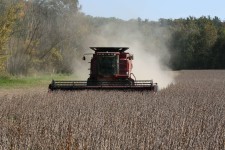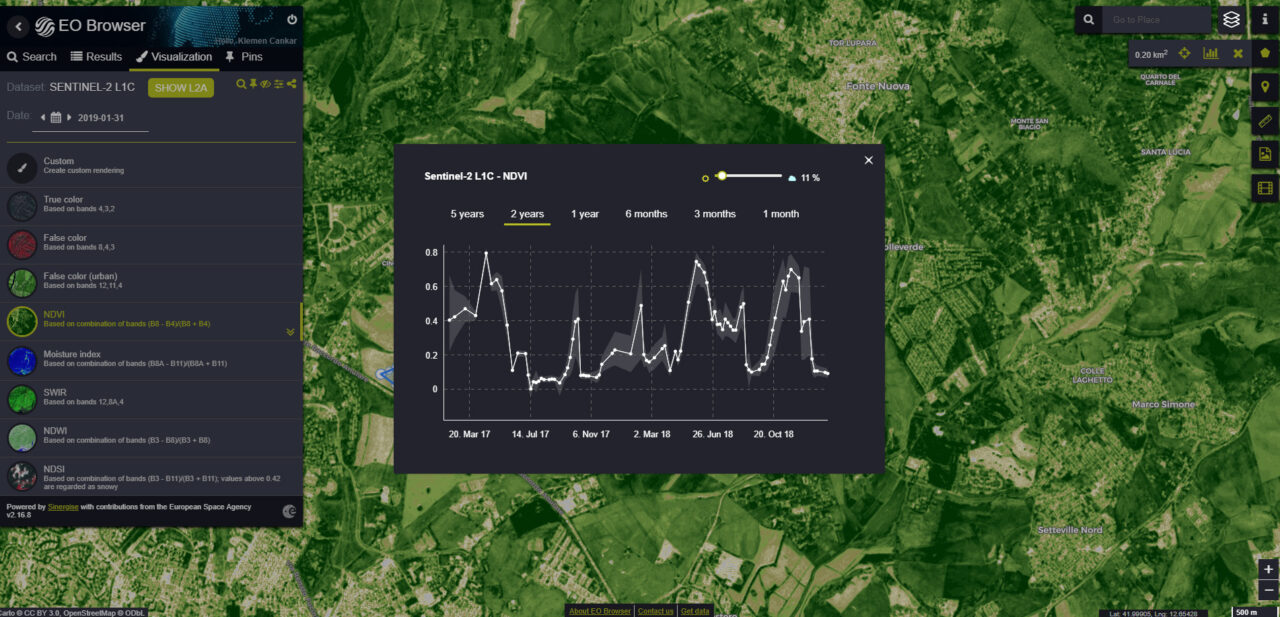Drought 2012: Webinar Sheds Light On What To Expect In 2013

As of the most recent USDA Drought Monitor report (September 11, 2012), just over half of the continental U.S. is still mired in “moderate drought” conditions, while 38% are in “severe drought” and 20% in “extreme drought or worse”.
Yet, everywhere you look around the industry, things are moving at a frantic pace. Retailers, fertilizer manufacturers and seed companies are already locking in grower contracts for next planting season, as are ethanol and bean futures bids for the next harvest. Without this year’s crop even yet fully accounted for, somehow a grower has to make these decisions that carry major implications for his operation without every piece of the proverbial puzzle.
Helping make those tough planning decisions a bit easier was the goal of a recent Purdue Extension webinar, “Agricultural Outlook 2013,” presented by Extension agricultural economist Corinne Alexander, and these were our main takeaways after viewing the presentation:
- Impact of Drought Uncertain: With harvest only around 15% complete as of the presentation, there is still no verified, hard data on just how much revenue the drought will cost ag’s bottom line. Looking back, the Drought of 1988 brought with it a reported cost of $77.6 billion, while 2005’s Hurricane Katrina, the most expensive natural disaster in U.S. history, brought with it a price tag of $146 billion. “We anticipate this drought will bring with it a larger cost than the 1988 Drought, but quite a bit less than Katrina,” said Alexander.
- Soil Moisture Recharge: Many are wondering if a dry fall will continue to place undue stress on the soil and our nation’s water sources. According to a weather outlook report commissioned by the Department of Commerce’s National Oceanic and Atmospheric Administration, projections call for “drought conditions likely to improve, impacts ease” throughout the key producing areas (Iowa, Illinois and Indiana) of the Corn Belt this fall. “This improvement trend is great news,” said Alexander of the report. “We are in a situation where we have very low sub-soil moisture levels and so we need to see more rains to recharge our sub-soil moistures. We need that moisture for the next crop, but what really matters is what happens next summer.” Conversely, much of the Great Plains into the Rocky Mountains region is expected to remain under drought-like conditions through March of 2013.
- 2013 Growing Season: While it is virtually impossible to accurately predict weather patterns from year-to-year, Alexander presented these five conclusions, drawn from analysis of historical weather trends, to give growers a general idea of what to expect going into 2013:
- There is little persistence toward year-after-year droughts in the Eastern Corn Belt (ECB).
- The odds of a drought in 2013 in ECB are about the same as in any year. Each growing season is independent of the next.
- The Great Plains has a stronger persistence toward year-after-year drought than the Corn Belt does.
- The difference for the ECB is the flow of moisture out of the Gulf of Mexico.
- Global Warming? 2012 sheds little light on whether global warming was a contributor, or was NOT a contributor-The U.S. had droughts of this magnitude in 1934, 1936 and 1988.
- Yields: Overall, projected yields are down from 2011, but not as substantially as many expected. Currently, projected national average corn yields are at 123 bu/acre, while soybean yields are at 35 bu/acre. Last year, national corn yield averages were at 153 bu/acre and soybeans at 41 bu/acre. “Many of us were expecting that the USDA would drop those corn yields a lot more than that 123 bushels, which is only .6 below the August projections, and that’s got people wondering ‘Why are the yield projections still so good?’,” said Alexander. “But the term ‘good’ is all relative to what people were expecting, as many in the trade were expecting numbers closer to the 118-119 level.” Alexander credits the higher yield projections to southern states such as Louisiana and Alabama producing 10-15 bu/acre higher yields than previously was expected. Meanwhile, overall projections for U.S. corn production are at 10.7 billion bu, down from the August projection of 12.3 billion, and soybeans are at 2.7 bu, down from 3.3 bu.
- Ethanol Blend Wall Implications: Always a concern when it comes to corn, USDA is projecting overall ethanol usage to be down in 2013 by 10%, or 50 million bushels. Much of that projection is tied to the increase of the Ethanol Blend Wall, which currently sits at 10% but is being raised by EPA to 15% in the near future. Basically, the Blend Wall equals how much ethanol can be blended into consumer gasoline as mandated by auto manufacturer engine warranties. “The Blend Wall is starting to become a concern,” said Alexander. “A lot of the auto manufacturers are not yet comfortable with saying we will warranty our vehicles with 15% ethanol blend. That’s a voluntary decision, so right now we’ve got this blend wall where we can only blend about 10%. But we are currently producing more ethanol than is required to meet that 10% blend, and so therefore in 2013 we think we are going to see gasoline manufacturers going away from ethanol, using other alternative fuel sources they have in excess in order to meet their Renewable Fuel Standards, simply because of this blend wall.” Conversely, USDA projections of livestock usage of corn are up for 2013.
- Exports Down: USDA export projections are also down by 50 million bu from the August projection. “Given our very high price for corn, importers of U.S. corn are starting to look elsewhere to places like South America that have corn available at a cheaper price,” said Alexander.
- Corn Prices Continue Trend Upward: While USDA lowered its September corn price forecast 30 cents on both ends of the range, with August’s previous best price of $8.60 now at $7.90, and the low at $7.20 from $7.50, that current $7.90 price forecast is still remarkably $1.65 higher than last year’s $6.25 record projection. “We are talking about unprecedented, extremely high corn prices that have ripple effects throughout a lot of industries,” said Alexander.
- Deliver Now Or Later?: With current ethanol futures bidding at around the $8 mark, many are wondering whether to deliver their corn to market now or silo it and sell it later at a higher premium. Alexander cautions against storing corn, as the $8 price level is expected to remain until June or July of 2013, at which point it will begin to drop dramatically. “When we look at making a decision whether to store or not, the first thing we want to look at is how much the market is paying you to store that crop,” advised Alexander. “This is a pretty unusual price pattern, as basically the ethanol plants are saying we’re going to pay you the same price whether you deliver it today or nine months from now. The market is not paying you more to store, so what that means is if you choose to store, you are then speculating that there will be some kind of surprise coming to the market that drives the price higher.” Alexander also notes the implicit risk (aflatoxin, other molds/insects etc.) a grower takes when storing on-farm. “You are taking direct responsibility for quality management of that grain,” she said. “If you are at all concerned about aflatoxin or other problems developing, then this is corn that you should not store, unless you have crop insurance that allows for an aflatoxin claim.”
- Sell, Sell, Sell Soybeans: Much like the advice given on corn storage, Alexander and Purdue are advising soybean growers to not store beans on-farm this season. “2.6 billion bu is the current overall USDA soybean production projection, which is a very small soybean crop,” said Alexander. “We are at a situation where all of the users of this crop on the demand side are going to have to ration their usage simply because soybeans aren’t available.” Exports of soybeans are also expected to drop dramatically in 2013. “Because of the extremely high prices of our soybeans, you’ve got countries like Brazil and Argentina saying ‘At these prices, we’re going to plant every single available acre in beans, because they are so profitable’, and so the market is anticipating a much-larger crop, given normal weather, from Brazil and Argentina, and that’s going to drop the price from the current level of $17.50 down into the $13 range by March 2013. Basically, the market is telling you very clearly not to store soybeans, because if you do you are holding an asset that is expected to decline dramatically in value.”
- Natural Hedge: Despite the drought and ensuing market uncertainty, USDA is still forecasting record farm incomes for 2012 and beyond, which has many folks again scratching their heads. Alexander finds two primary factors that allowed growers to avoid the worst financial crisis in agriculture’s history, one of which is a phenomenon called “The Natural Hedge” (the other is crop insurance payments). “The Natural Hedge is the big difference between this drought and the impact of the 1988 drought,” said Alexander. “In 1988, going into that drought we had large inventories of corn, which meant the yield losses had nowhere near the price impact because of the large inventories. Going into this year, we had very tight supply, meaning the loss in production has resulted in very high price increases.” Looking at prices from before the drought took hold, on June 15 corn had a price of $5.06. On September 9, the price was at $7.68, a 52% increase over a 90-day period. Over that same period, projected yields went down 28%, so as yields decline, the natural price increase will offset those yield losses. Soybean prices also increased by 32% over that same period, while the total value of the six main U.S. production crops increased by a reported $17 billion.
- Protecting 2013: Alexander and Purdue don’t expect the current high commodity prices to continue in the long term, with a 2013 anticipated harvest price of $6.30/bu and a 2014 harvest projection of $5.55. “If we have a good crop next year, with production above 14 billion bu, we expect to be able to rebuild inventories by $1 billion bu, at which point cash prices will drop dramatically,” she said. “Furthermore, we could even see corn harvest prices as low as $4.60 if a strong South American crop comes in.” Soybeans will also likely suffer the same fate, according to Alexander, as today’s price of $17.40 could easily plummet to as low as $12.77 by 2014, as increased production from Brazil and Argentina rebuild once-depleted inventories and return soybeans to more “normal” price ranges.






